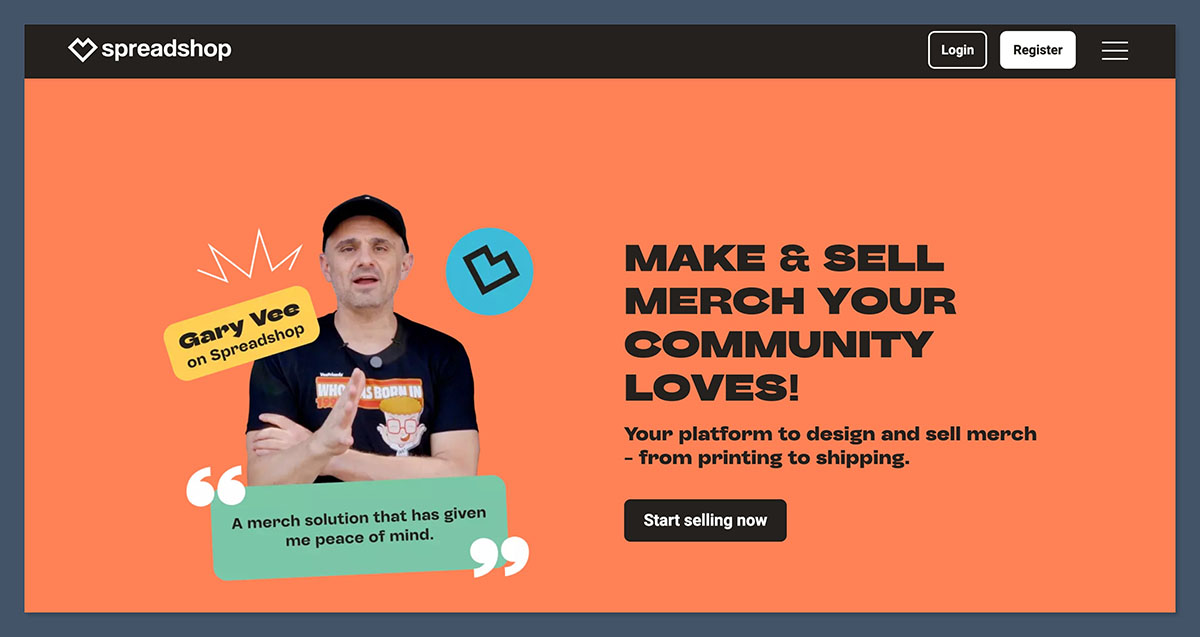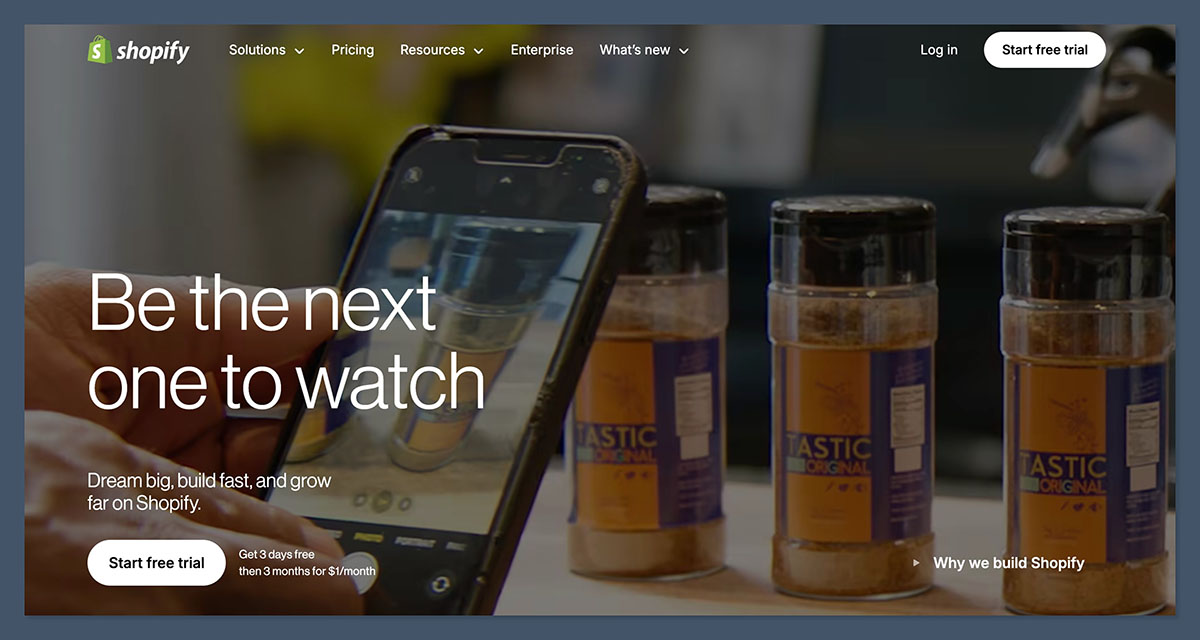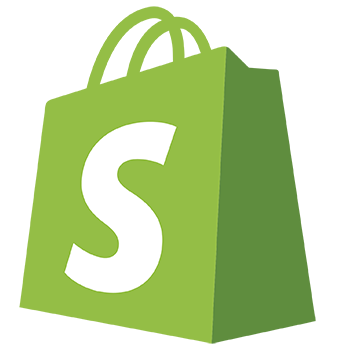Spreadshop and Shopify are two popular platforms for launching a print-on-demand business — but they cater to very different types of sellers.
To help you figure out which one fits your needs, I’ve tested and compared both platforms in detail.
From pricing and profit margins to product options, store design, and marketing tools — this review breaks it all down clearly.
Quick Verdict:
Shopify is better for building and scaling a custom ecommerce brand.
Spreadshop is better for creators looking to launch a no-cost merch store quickly.
Quick Comparison: Spreadshop vs Shopify
Here’s a quick overview of the key differences:
| Feature | Spreadshop | Shopify |
|---|---|---|
| Pricing | Free | Starts at $39/month |
| Product Catalog | Fixed (Spreadshop only) | Unlimited via POD integrations |
| Branding Control | Limited | Full control |
| Custom Domain | Not supported | Fully supported |
| SEO Tools | Basic | Advanced |
| Apps & Integrations | Minimal | 8,000+ |
| Customer Support | Handled by Spreadshop | Merchant or POD provider |
| Profit Margins | Fixed per product | Flexible, potentially higher |
| Best For | Creators, hobbyists | Growing brands, ecommerce pros |
Best for Pricing: Spreadshop

If cost is your biggest concern, Spreadshop is the more budget-friendly platform by far.
Spreadshop Pricing
Spreadshop is free to use.
You don’t pay for access, hosting, or any monthly subscription. Instead, Spreadshop sets a base cost for each item in their product catalog, and you add your own markup.
You earn the difference, and payouts happen monthly.
Key details:
- No monthly fees
- No transaction fees
- Spreadshop takes care of customer service and fulfillment
- Payouts via PayPal or bank transfer
Shopify Pricing
Shopify uses a tiered subscription model. You’ll pay monthly for access to the platform and its features. Here’s how the pricing breaks down:
| Plan | Price (USD/month) |
|---|---|
| Basic | $39 |
| Shopify | $105 |
| Advanced | $399 |
The Basic plan is designed for new stores or sellers just starting out. It includes essential features like unlimited products, two staff accounts, basic reports, and access to Shopify’s full suite of sales channels.
The Shopify plan is ideal for growing stores that need more functionality and better insights. It includes five staff accounts, professional reports, and lower credit card rates compared to the Basic plan.
The Advanced plan is best for high-volume sellers and brands with complex operations. It offers up to 15 staff accounts, advanced report building, and real-time shipping rates from third-party carriers.
You’ll also pay transaction fees unless you use Shopify Payments, plus costs for your domain and any third-party apps.
Verdict: Spreadshop Wins on Cost
Spreadshop is a zero-cost, low-risk way to start selling print-on-demand. Shopify is more expensive but offers more features and flexibility.
Best for Product Catalog: Shopify

Shopify gives you access to far more products through a wide range of print-on-demand apps.
Spreadshop Product Options
Spreadshop connects you with the Spreadshirt product catalog, which includes about 130 items. You’ll find:
- T-shirts
- Hoodies
- Tank tops
- Mugs
- Tote bags
- Stickers
- Hats
- Aprons
- Phone cases
You’re limited to what Spreadshop offers — you can’t add new suppliers or source from other catalogs.
Shopify + POD Integrations
Shopify doesn’t have its own product catalog, but that’s a good thing. You can connect with any of the major POD services:
- Printful
- Printify
- Gelato
- SPOD
- Apliiq
- Teelaunch
Each provider has its own strengths — from product variety to print quality and shipping times. With Shopify, you can even mix and match providers in the same store.
You’ll get access to hundreds of unique items, including:
- Embroidered apparel
- Custom phone cases
- Jewelry
- Canvas prints
- Supplements
- Wall art
- Sportswear
- Organic products
Verdict: Shopify Wins on Product Variety
Shopify’s open marketplace of POD integrations gives you more flexibility and a much larger product range.
Best for Branding and Customization: Shopify
When it comes to creating a store that reflects your brand, Shopify is in another league.
Spreadshop Branding Capabilities
Spreadshop gives you a basic storefront with limited customization:
- You can upload a logo
- Choose colors and a preset layout
- Create product categories
But you’ll always be hosted on a subdomain (e.g. yourstore.spreadshop.com) and you can’t remove Spreadshop branding.
Checkout pages and emails also include Spreadshop logos and designs.
Shopify Branding Tools
Shopify lets you fully customize your store from top to bottom:
- Use your own domain (e.g. yourbrand.com)
- Choose from 190+ themes (13 free, others $100–$500)
- Modify fonts, colors, layouts, and elements
- Customize checkout, cart, and customer notifications
- Add branded packaging (via some POD apps)
This gives you full control over how your store looks and how your customers experience it.
Verdict: Shopify Offers True Brand Control
If branding matters to you — from domain name to email templates — Shopify is the way to go.
Best for Profit Margins: Shopify
Profit margins can make or break your business. Shopify offers more control over your costs and pricing strategy.
Spreadshop Margins
Spreadshop’s base costs are fixed, and you set your markup. For example:
- Base cost: $15.99 for a t-shirt
- Selling price: $25.99
- Profit: $10
You can’t lower base costs or negotiate discounts, so your margins are limited.
Shopify + POD Margins
With Shopify, you can choose your POD provider and adjust pricing freely.
Example using Printify:
- T-shirt base cost: $9.80
- Selling price: $29.99
- Profit: ~$17 (after Shopify transaction fee)
You can also:
- Offer product bundles
- Add upsells
- Use apps to boost average order value
- Adjust shipping to offset costs
This allows you to grow your margins as your sales increase.
Verdict: Shopify Offers More Profit Potential
You’ll need to invest more upfront, but Shopify gives you the tools to increase your margins significantly over time.
Best for Marketing and SEO: Shopify
If you want to attract traffic and build an audience, Shopify provides far more tools and integrations.
Spreadshop Marketing Tools
Spreadshop is mostly geared toward creators already driving traffic from other platforms. Marketing tools are basic:
- Simple discount code creation
- Integration with YouTube Merch Shelf
- Social sharing tools
SEO features are limited — you can’t fully customize URLs or metadata.
Shopify Marketing Tools
Shopify includes a wide range of built-in and app-based marketing options:
- SEO editing for titles, descriptions, and URLs
- Built-in blog and content tools
- Social media selling (Facebook, TikTok, Instagram)
- Google Shopping integration
- Shopify Email for email marketing
- Thousands of apps for remarketing, SMS, and pop-ups
Plus, Shopify integrates with Semrush and has advanced reporting tools to track ROI across channels.
Verdict: Shopify Dominates in Marketing Tools
Shopify is made for serious sellers who want to grow through SEO, email, and paid marketing.
Best for Ease of Use: Spreadshop
If you want to start selling today with minimal setup, Spreadshop is easier to use.
Spreadshop Experience
Spreadshop removes all the technical setup:
- Sign up in minutes
- Choose a storefront layout
- Upload designs
- Set prices
- Start promoting your link
There’s no need to connect domains, choose themes, or manage backend systems.
Shopify Setup Process
Shopify is more complex, especially if you’re new to ecommerce:
- Choose a plan
- Pick and customize a theme
- Connect a domain
- Install POD integrations (Printful, Printify, etc.)
- Set up taxes, shipping, and payments
There’s a learning curve, but Shopify provides detailed guides and tutorials to walk you through it.
Verdict: Spreadshop Is Easier to Launch
If you need something quick, simple, and hands-off — Spreadshop wins. If you’re okay with a setup phase for more control later, Shopify is worth the effort.
Best for Customer Support and Fulfillment: Depends on Your Preference
Both platforms offer support, but they approach it differently.
Spreadshop Fulfillment
Spreadshop handles:
- Printing and shipping
- Customer service and returns
- Order tracking
You don’t need to touch any part of the fulfillment process.
Shopify Fulfillment
With Shopify, your print-on-demand provider (like Printful) handles fulfillment. You’ll still need to manage:
- Customer emails and complaints
- Order edits and refunds
- Product delivery communication
You can integrate tools like Gorgias, Zendesk, or Shopify Inbox to automate support.
Verdict: Tie — Choose Based on Preference
If you want to stay hands-off, Spreadshop is simpler. If you want more control, Shopify gives you full visibility and tools.
Final Verdict: Spreadshop vs Shopify
Here’s a final breakdown of where each platform shines:
| Category | Winner |
|---|---|
| Pricing | Spreadshop |
| Product Variety | Shopify |
| Branding | Shopify |
| Profit Margins | Shopify |
| SEO & Marketing | Shopify |
| Ease of Use | Spreadshop |
| Support & Fulfillment | Tie |
My Recommendation:
- Choose Spreadshop if you want to start for free, don’t need branding control, and prefer a hands-off approach.
- Choose Shopify if you want to build a serious brand, grow over time, and take control of your store’s design, SEO, and margins.








